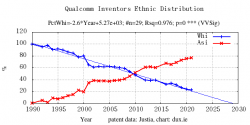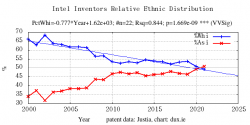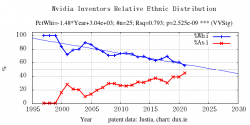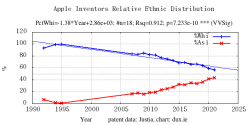You are using an out of date browser. It may not display this or other websites correctly.
You should upgrade or use an alternative browser.
You should upgrade or use an alternative browser.
News on China's scientific and technological development.
- Thread starter Quickie
- Start date
Some old posts on Starlink
Think about it.
Speed and cost are intimately related, because a fixed bandwidth has to be shared across multiple users.
You could have a single Starlink satellite providing ultra-fast services to a small number of users, but they're going to be paying a lot more for that privilege.
In the UK for example, gigabit broadband is being rolled out in the UK for $60 per month.
And a Starlink satellite currently only supports 17 such subscriptions per satellite.
---
Also, the beam width is going to cause capacity issues, because a satellite cell is going to cover a lot of land area.
Consider California, which has 40million people and covers 423,000km2.
Even the planned constellation of 30K starlink satellites means each satellite has to cover an average of 17,000 km2 of surface area.
That means 25 starlink satellites for California. So that is a grand total of 425 Gigabit broadband connections for those 40million people.
So I'll repeat again, this is why your statement that Starlink Satellite broadband will displace terrestrial-based broadband for many users is incorrect.
These are the primary reasons why Elon Musk only expects 4% of the USA to use satellite broadband.
What do you expect the other 96% of the population to be using?
---
China is spending a lot more on 5G than Starlink yes.
But you're talking about 3 million existing 4G base stations in China, which could be upgraded to 5G.
And each 5G base station can have the throughput the equivalent of a Starlink satellite, if the consumer demand is there.
---
I agree high-speed internet will be a game changer for many use cases.
Latencies for long distances will be lower, so yes, financial trading firms will sign up.
But the transmission of the latest trading data barely uses any bandwidth, and there aren't actually many companies that need to shave off 10 milliseconds of transmission time.
Yes, ships and airplanes will see a revolutionary impact by having high-speed internet at a much lower cost than currently.
However, trucks and trains will likely stick with terrestrial 5G networks, because they are already in range of existing 5G base stations.
Plus I'm aware of a number of other companies which are planning to create their own satellite broadband networks.
I did a post on the topic last year.
After all, the business model works because there is a small percentage of people who can't get decent broadband from any terrestrial source. For example, even 4% of the global population means 280million customers.
Fibre already reaches local telephone exchanges in most of the world.
It's the only way to support the existing 60mbit DSL services delivered by copper telephone lines to every home.
For example, there are 5500 telephone exchange in the UK, which should be representative.
So that is roughly 12000 people served from a single telephone exchange.
1. If you want to deliver Gigabit broadband, you could lay down fibre from each telephone exchange to the local cabinet/building, which is expensive yes.
But note this is already happening in cities in the UK, because there is sufficient demand for Gigabit broadband at $60 per month.
2. Or perhaps you stick a 5G/Wimax antenna on a 50m pole on top of each telephone exchange.
That would cover everyone and you can deliver Gigabit broadband that way instead.
In both these scenarios, the cost of delivering Gigabit broadband is far less than with a satellite broadband service.
I think Starlink and SpaceX concepts are genius from both a technology and profitability perspective.
But don't get sucked into the Starlink marketing hype that it will change the world.
People don't realize that globally high-tech innovation is being dominated wholesale now by Chinese even in and especially in the United States.
At this point it's literally just Chinese in China competing with Chinese in America (and a smattering of Koreans and Indians in the US part of this coalition).




If you look at this analysis by German academic Gunnar Heinsohn you'll see how dire the American future is:

Physicist and geneticist Dr. Hsu comments on how these are conservative estimates:
At the highest level of math and science it appears more likely that Chinese will be 20x larger than the US, meaning roughly double the rest of the world combined. And that's just if everything in the US stays the same, which I personally find unlikely. I suspect they are going down a demographic road that will be impossible to escape.
At this point it's literally just Chinese in China competing with Chinese in America (and a smattering of Koreans and Indians in the US part of this coalition).




If you look at this analysis by German academic Gunnar Heinsohn you'll see how dire the American future is:
It is possible that by 2050 the highly able STEM workforce in PRC will be ~10x larger than in the US and comparable to or larger than the rest of the world combined. Here "highly able" means roughly top few percentile math ability in developed countries (e.g., EU), as measured by PISA at age 15

Physicist and geneticist Dr. Hsu comments on how these are conservative estimates:
It is trivial to obtain this kind of estimate: PRC population is ~4x US population and fraction of university students in STEM is at least ~2x higher. Pool of highly able 15 year olds as estimated by PISA or TIMMS international testing regimes is much larger than in US, even per capita. Heinsohn's estimate is somewhat high because he uses PISA numbers that probably overstate the population fraction of Level 6 kids in PRC. Current PISA studies disproportionately sample from more developed areas of China. At bottom (asterisk) he uses results from Taiwan/Macau that give a smaller ~20x advantage of PRC vs USA. My own ~10x estimate is quite conservative in comparison.
At the highest level of math and science it appears more likely that Chinese will be 20x larger than the US, meaning roughly double the rest of the world combined. And that's just if everything in the US stays the same, which I personally find unlikely. I suspect they are going down a demographic road that will be impossible to escape.
Last edited:
Really cool trackless train
Inst this the same as long busses?
Really cool trackless train
I fail to see the utility of this vehicle. If you want train then you must have huge carrying capacity. I doubt that long trains can get on the road
@voyager1 bro its ingenious, its ideal for us here in the developing world, track train are expensive and maintenance heavy, with this all you need is a lane with markings and let this trackless train run free or run on the existing road network. Track Construction which account the largest share of the cost will be less especially with the RIGHT OF WAY issues. Its a prefect solution for our traffic problem here in EDSA.Inst this the same as long busses?
I fail to see the utility of this vehicle. If you want train then you must have huge carrying capacity. I doubt that long trains can get on the road
Last edited:
Ah I see what you mean. Yes, this would dramatically reduce the infrastructure spending to get trains@voyager1 bro its ingenious, its ideal for us here in the developing world, track train are expensive and maintenance heavy, with this all you need is a lane with markings and let this trackless train run free. Construction costs will be less especially with the RIGHT OF WAY issues.
Pls note though, that I doubt these trains would get too long. But they are still good though
Also good innovation with making it electric, autonomous and without needing tracks ofc
Inst this the same as long busses?
I fail to see the utility of this vehicle. If you want train then you must have huge carrying capacity. I doubt that long trains can get on the road
Utility is the same as stretched buses except for some pretty important details.
The video shows three to five carriages of this vehicle. In reality, it can be scaled up and down to service different expected traffic loads. It's much more versatile than buses with fixed size and capacity. So for busy urban areas this vehicle could be set at 7 carriages for example and in areas that require more turning and have fewer people, it may only use three. It can also be adjusted according to expected passenger volume. Buses cannot. Often you see buses crammed to the point they cannot take more passengers or operating with only a few (although that rarely happens in China).
Another is that buses are quite a lot more difficult to make autonomous even though there have been plenty done in China for years. Those simply involve far more risk than a "tracked" vehicle. This is planned to be autonomously operated.
@voyager1 bro we are on an infrastructure boom initiated by Duterte, the Build Build Build project with trains and bridges. the cost of a MRT 7 project that connect Quezon city to Bulacan cost about $1.8 billion , 65% track structure cost 20% right of way and 15% train and safety equipment. Eliminate the track cost you save at least 60% or $1 billion that is a lot of MOONEYYY. Its a glorify BRT (Bus Rail Transit) systemAh I see what you mean. Yes, this would dramatically reduce the infrastructure spending to get trains
Pls note though, that I doubt these trains would get too long. But they are still good though
Also good innovation with making it electric, autonomous and without needing tracks ofc
Last edited:
Fail to see the utility of this too.Inst this the same as long busses?
I fail to see the utility of this vehicle. If you want train then you must have huge carrying capacity. I doubt that long trains can get on the road
The value of trains on tracks is the rolling resistance is significantly lower than rubber tires on road. Hence moving loads over distance is much more energy efficient on tracks than road.
This seems nothing more than a long articulated bus in another skin? Except now, they are melding self driving tech into it. It's still an articulated bus. Same pro/cons as any autonomous electric road vehicle, not that of a tracked train.
Also, beware if it is too long - it's gonna mess up road traffic that it's sharing space with.
